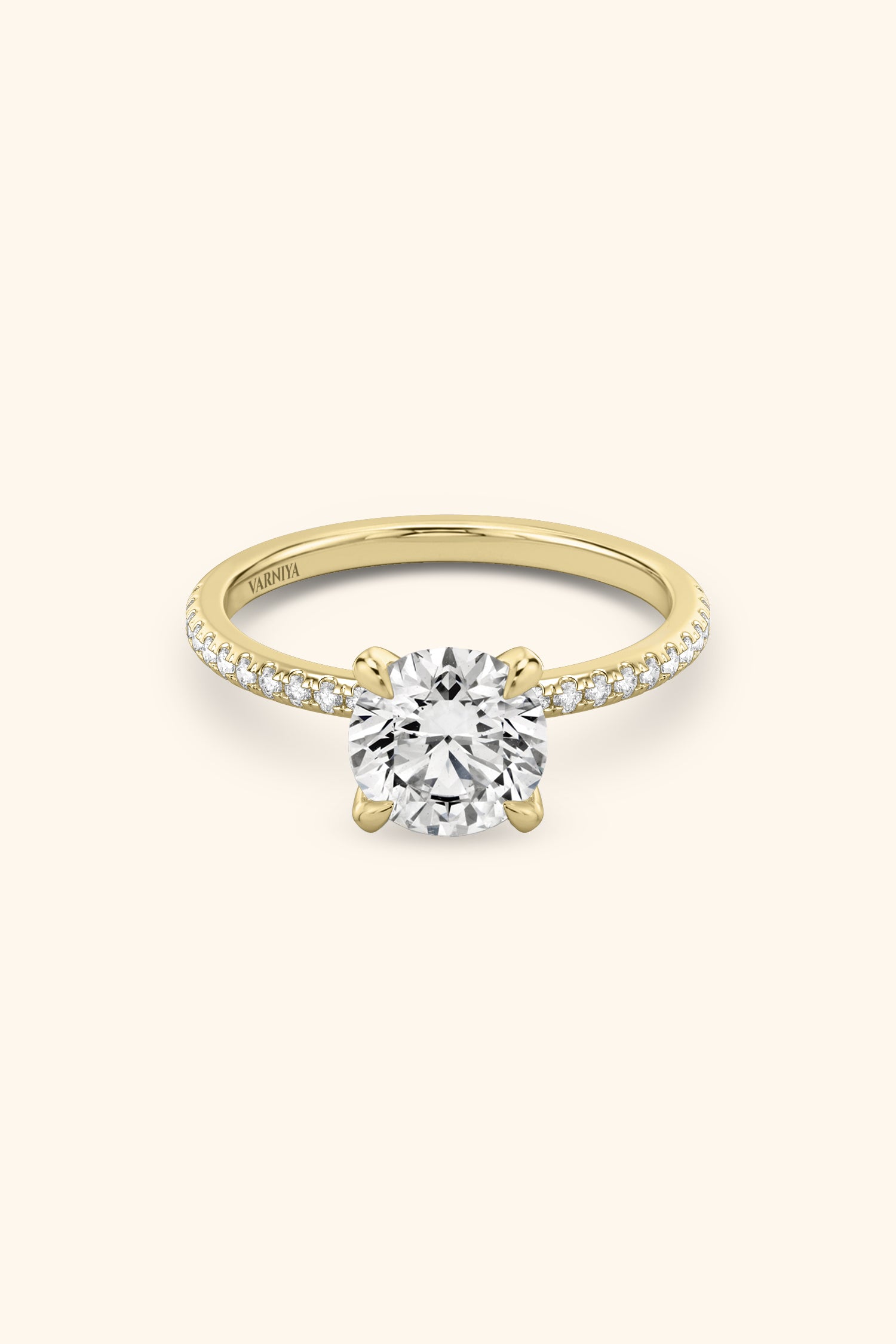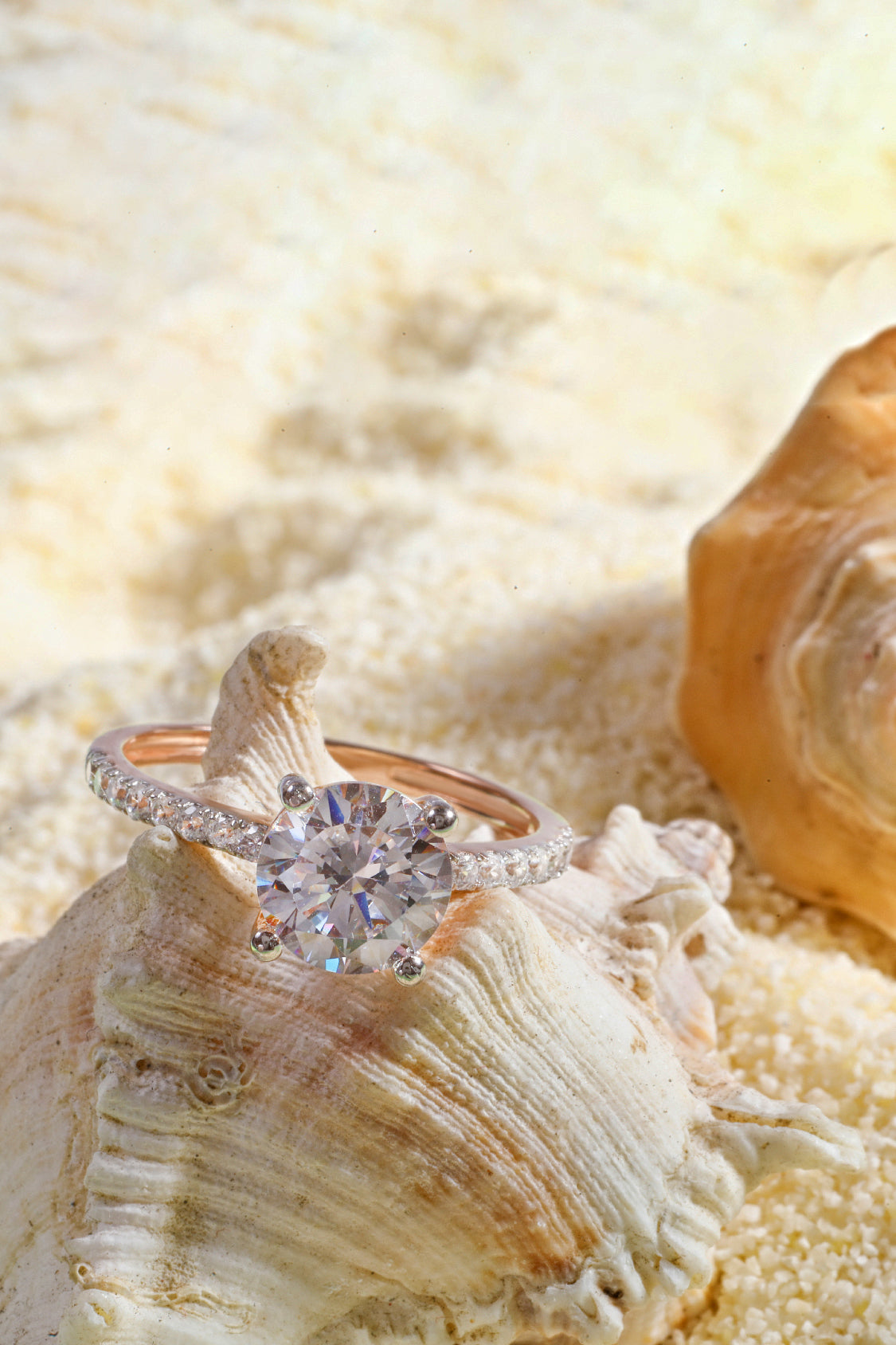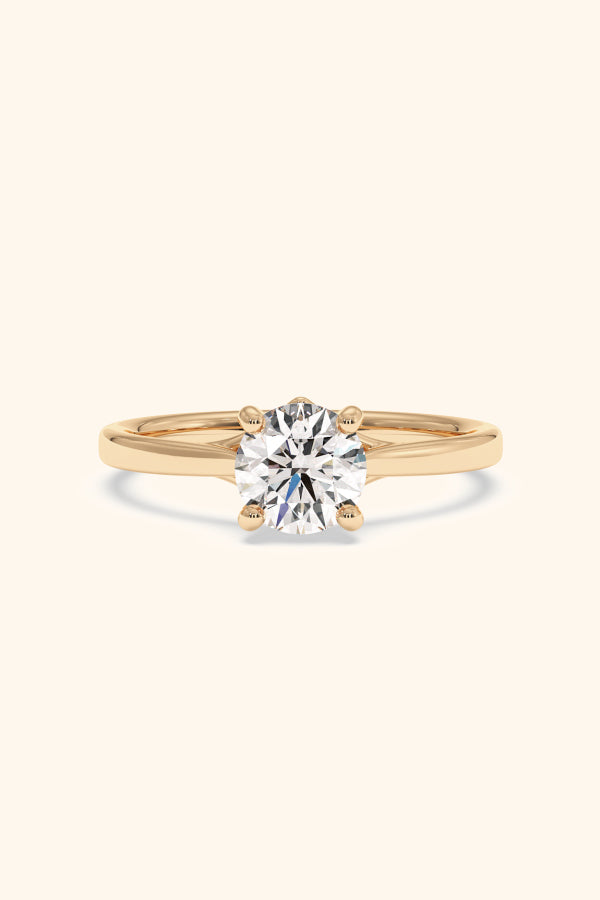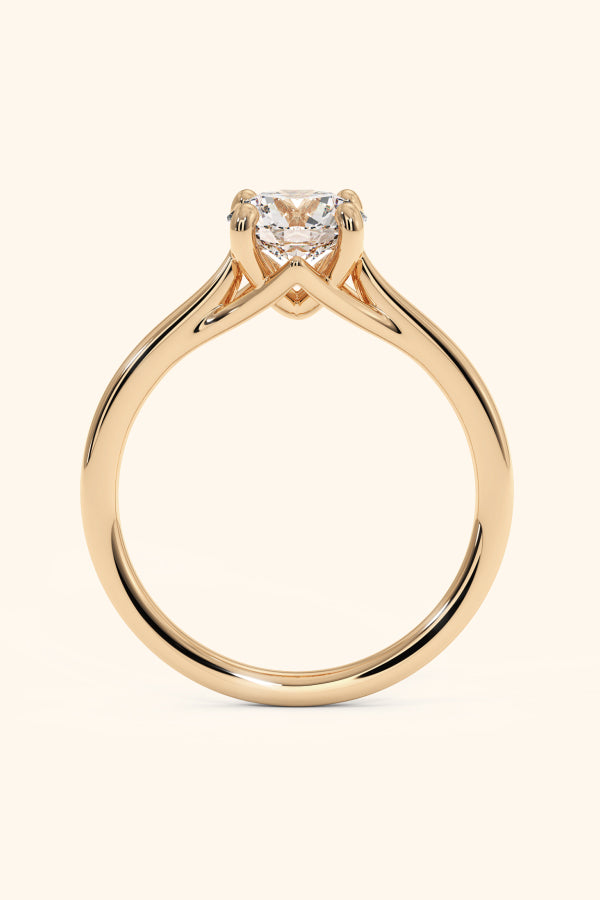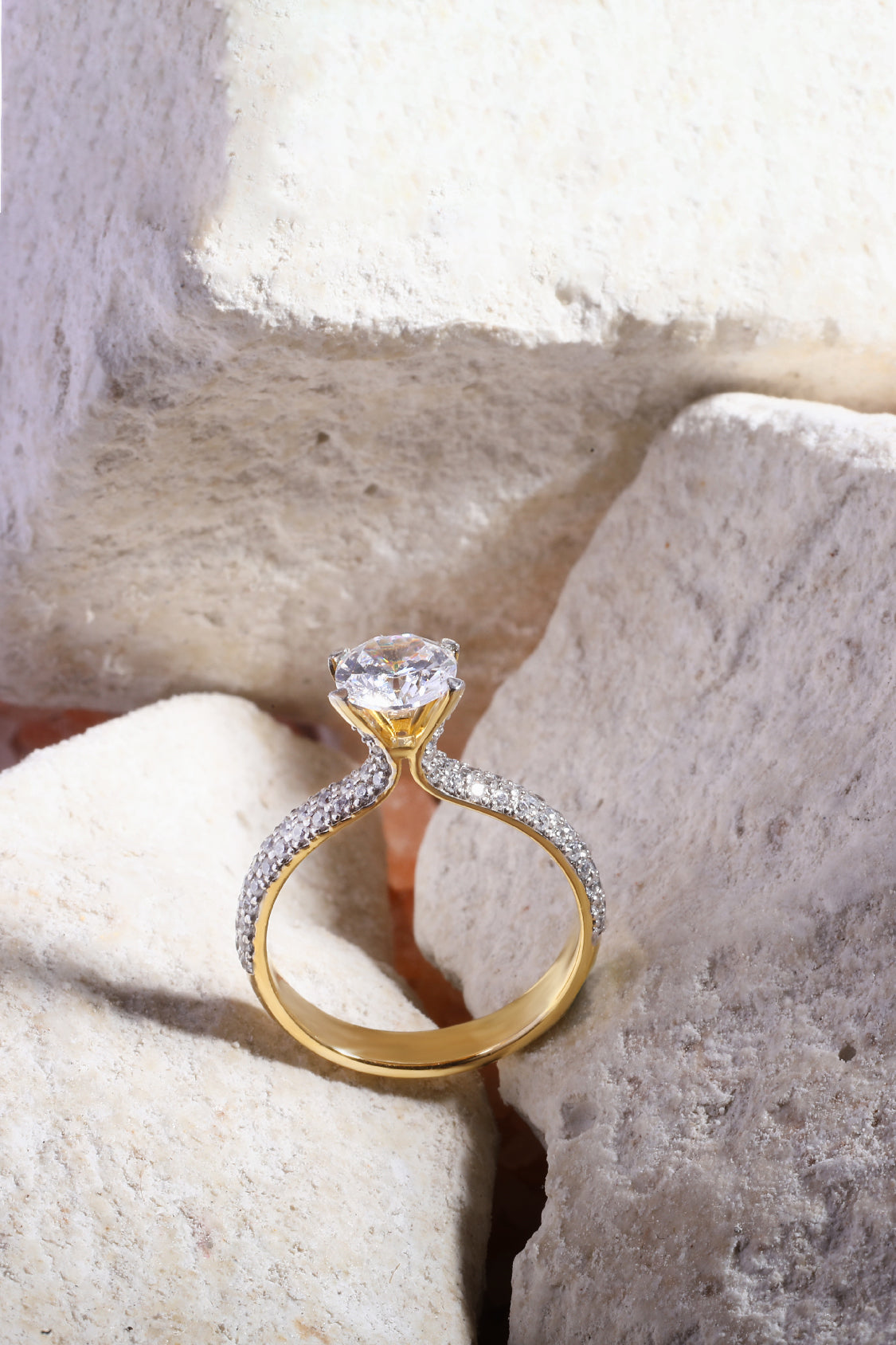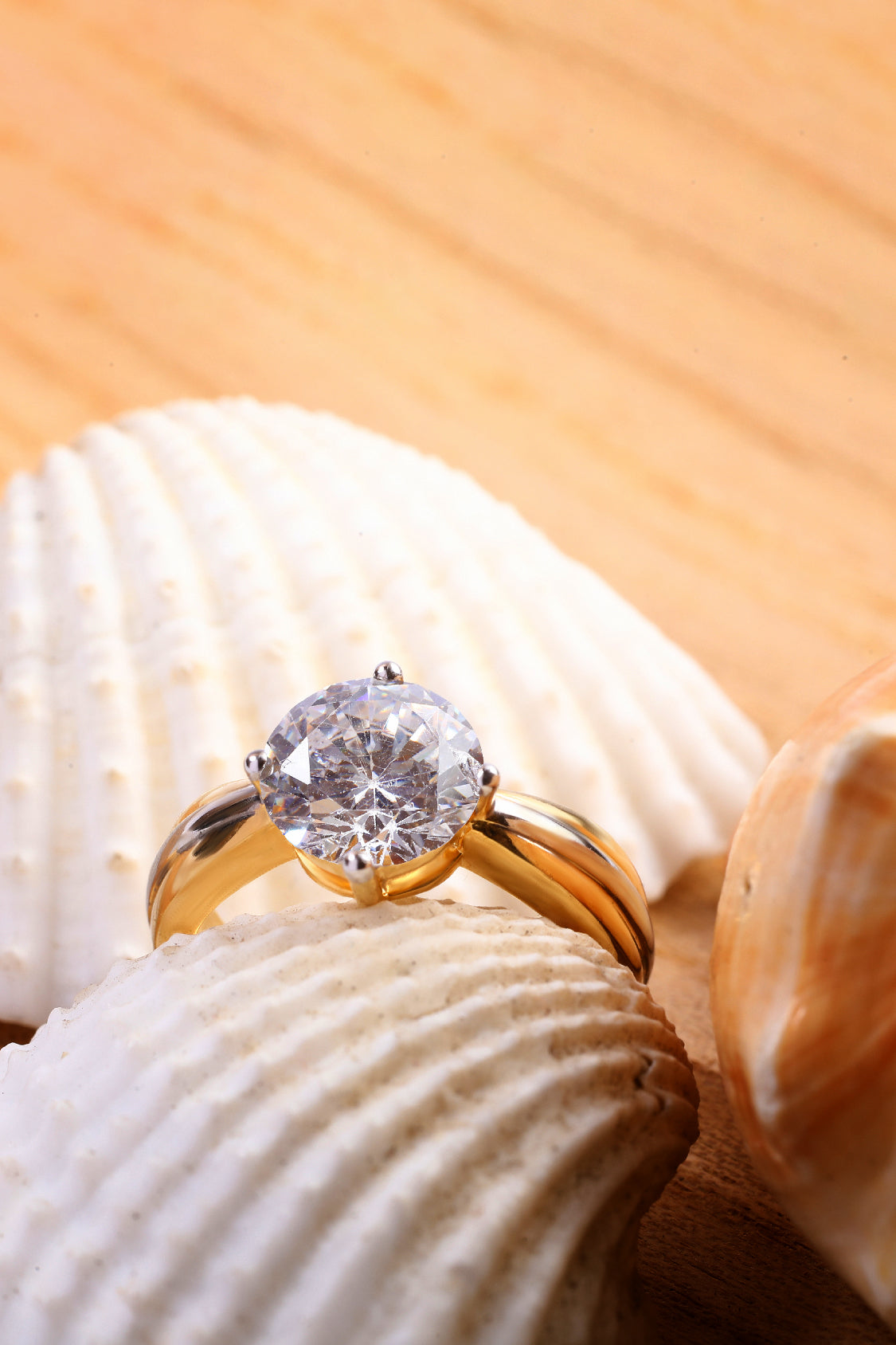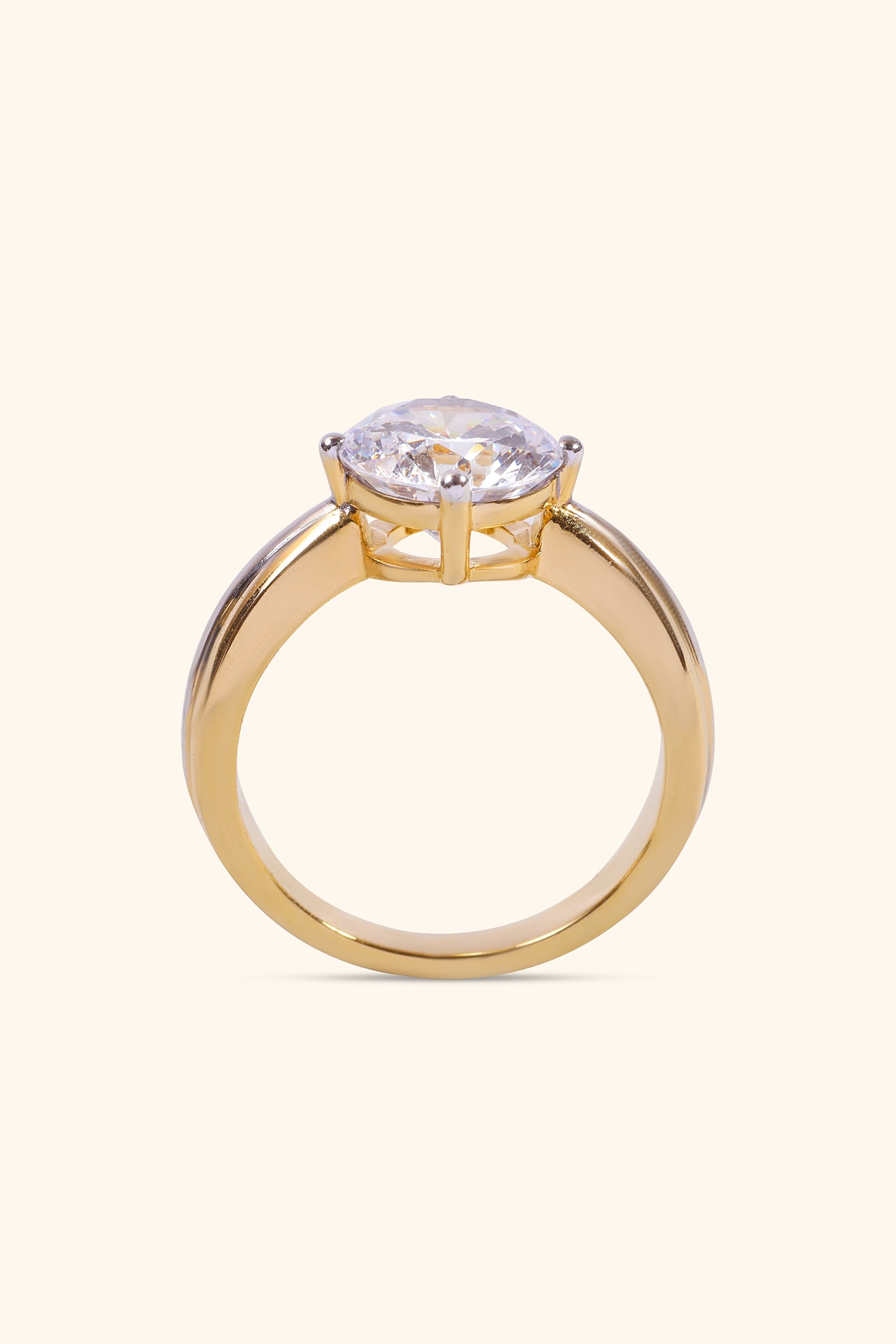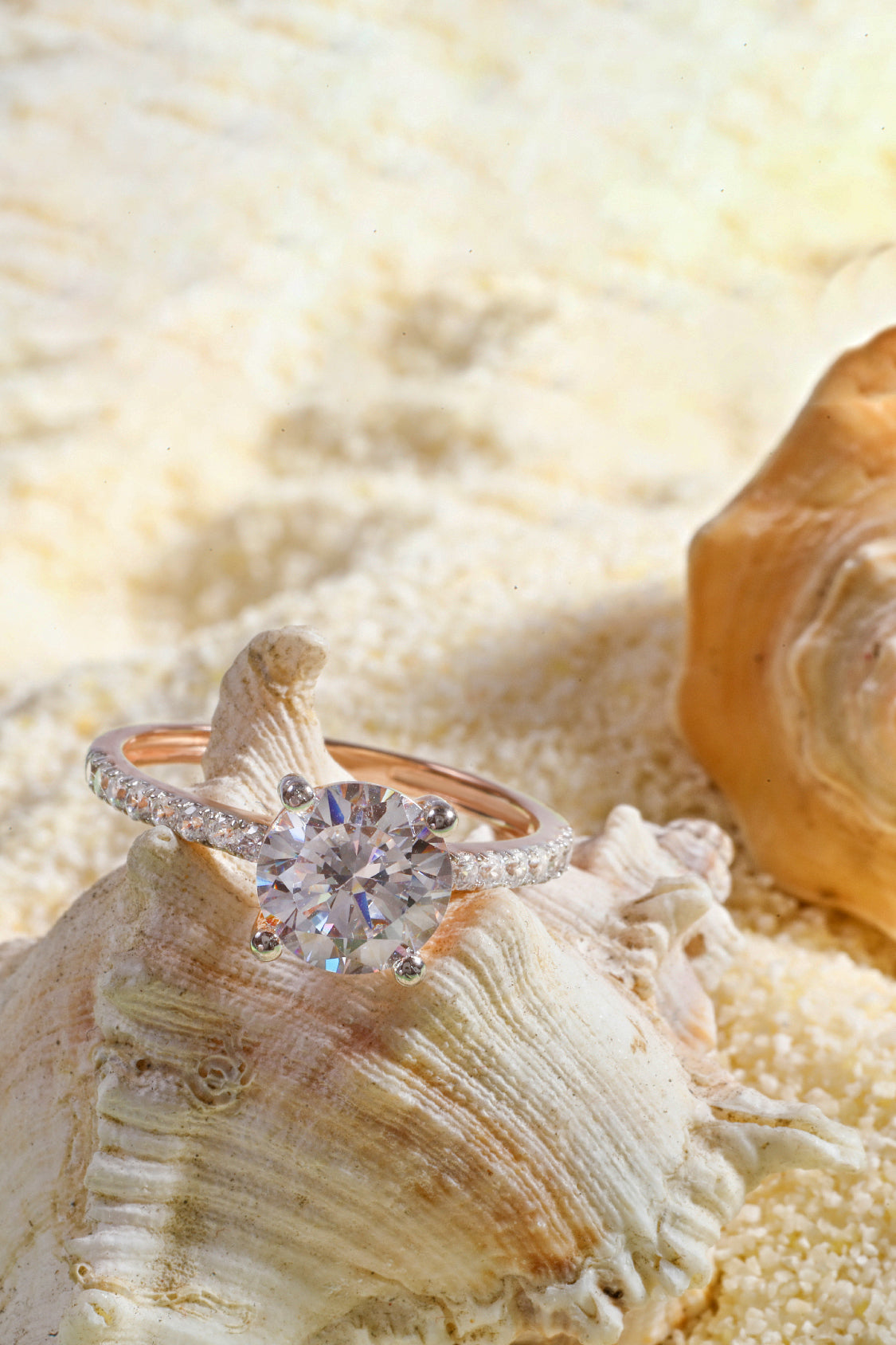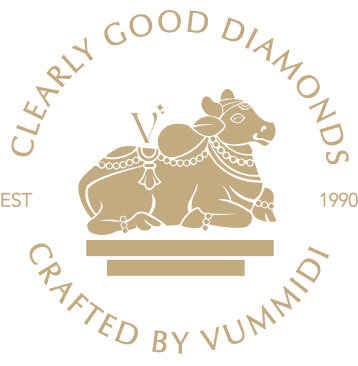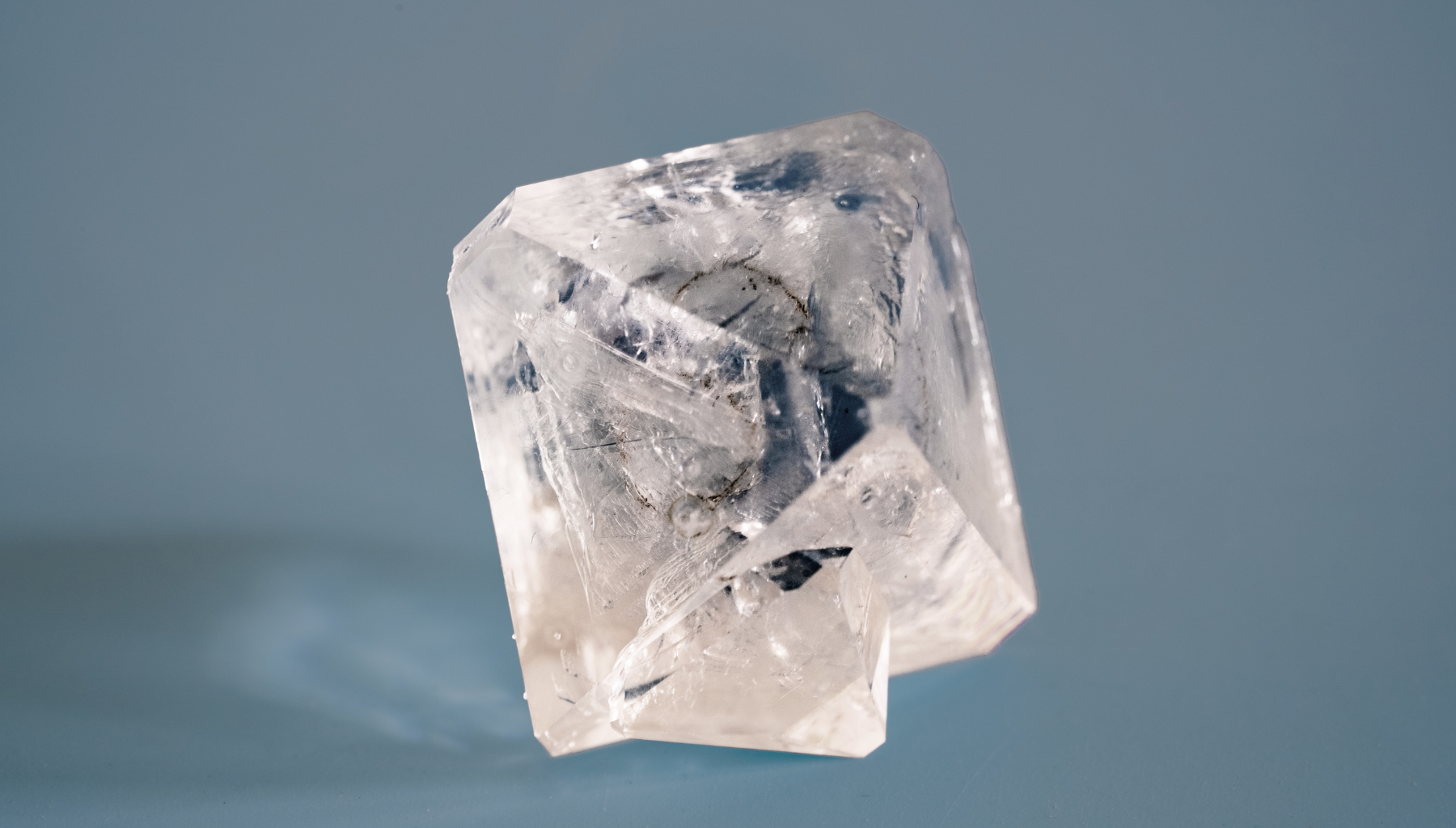
A Guide to Understanding Different Types of Lab-Grown Diamonds
Has the Dis Moi Oui engagement ring from The Crown left you speechless? Do you fantasise about the day when your guy goes on one knee and proposes to you with a dazzling diamond ring? Gone are the days when diamonds were a symbol of status and wealth. Now, with the rising popularity of lab-grown diamonds, proposals and wedding events need not be so expensive! Let’s polish the sparkle and spread the cheer by learning about the different types of lab-grown diamonds.
Introduction
We know diamonds are precious gems, but what makes them so precious? From mining to sorting, cutting, and polishing, diamonds travel a long way to become that lustrous gem. And not to mention the environmental and human impact of mining! So, how do the different types of lab-grown diamonds fare against this aspect?
Lab-grown diamonds share the same physical, chemical, and optical properties as natural diamonds. What makes them unique is their ethical and eco-friendly outlook. Moreover, they’re cheaper! That’s why the millennials and Gen Z prefer lab-grown diamonds over natural ones. According to Statista, lab-grown diamonds are seeing an increasing demand in the global diamond market, which is expected to rise by 10% in 2030.
Since lab-grown diamonds are made in highly controlled laboratory conditions, many mistake them for fake or imitations. However, it’s not true. Are you curious to know about lab-grown diamonds and their types? This blog will look at the two types of lab-grown diamonds—simulant and cultured diamonds—and help you decide on your best buy.
Simulant Diamonds
Among the two types of lab-grown diamonds, simulant diamonds can be trickier. They exude the look and feel of a natural diamond. However, under the microscopic eye, they show their true colours, thus earning the name of imitation diamonds. Though these man-made gems reflect natural diamonds' brilliance and fire (play of light), they have a different chemical and physical composition.
Did you know simulant diamonds were first created in the Victorian Age as an alternative to natural diamonds? Different materials, from cut glass to white sapphire, were used to make simulant diamonds and create a diamond-like effect. The most popular types of lab-grown diamond simulants include:
Cubic Zirconia (CZ)
Cubic Zirconia is made from zirconium dioxide and is a popular and budget-friendly choice. Though it resembles a diamond crystal, it is cheaper and not long-lasting. It is available in various cuts and sizes, making it a versatile option for jewellery designers.
Diamond Nexus
Diamond Nexus is made with carbon and other substances, making it more durable than Cubic Zirconia. Hence, it’s a good choice for those looking for a more realistic diamond alternative.
Moissanite
Produced from silicon and carbon, Moissanite is a strong and sparkling stimulant that adds a touch of elegance to the jewellery. However, due to its incredible hardness and fire, it comes with a heavy price tag.
So, simulant diamonds offer a dazzling and affordable alternative, but they aren't the same as lab-grown cultured diamonds. What makes the two types of lab-grown diamonds different? Let’s find out in the next section.
Cultured Diamonds
If the simulant types of lab-grown diamonds are the impostors, cultured diamonds are considered the real stars. They share the same chemical, physical, and optical properties as natural diamonds, which impart brilliance, fire, and lustre like their mined counterparts.
Unlike simulant diamonds, cultured diamonds are formed in an environment similar to natural diamonds but in a controlled lab setting. So, instead of millions of years of intense pressure and heat, advanced technology allows scientists to create these sparkling gems in weeks, making them a much more sustainable option.
Like natural diamonds, cultured diamonds are inscribed with microscopic markings to verify their authenticity and origin. This inscription helps ensure you get a genuine lab-grown diamond, not a simulant. So, always ask for a grading report from a reputable gemological institute while choosing lab-grown diamonds. This report will detail the diamond's cut, clarity, colour, and carat weight, like a natural diamond.
So, cultured diamonds offer a natural diamond's timeless beauty and sparkle but with the added benefits of sustainability and ethical sourcing. They are the perfect choice for eco-conscious consumers who want stunning jewellery.
Processes in Lab-Grown Diamond Creation

Though you’re familiar with the two types of lab-grown diamonds, you might wonder how they’re made. So, let's quickly dip into the fascinating world of lab-grown diamond creation with the two established methods: HPHT and CVD.
HPHT Diamonds
HPHT stands for High Pressure and High Temperature. This technique mimics the extreme conditions found deep within the Earth where natural diamonds form. It's the original method for creating lab-grown diamonds and is still widely used today.
The HPHT method uses specialised presses capable of generating immense pressure and scorching temperatures exceeding 2,700 degrees Celsius. These conditions recreate the environment where natural diamonds take millions of years to form, drastically reducing the time needed in a controlled lab setting.
The different types of presses used in the HPHT process include:
- Cubic press is a classic design that uses six anvils to apply pressure from all sides.
- Split-Sphere press utilises two opposing anvils to create a more uniform pressure distribution.
- Belt press uses two counter-rotating belts that exert continuous pressure on the diamond seed.
The HPHT process starts with a tiny diamond seed placed in a carbon-rich environment within a high-pressure, high-temperature chamber. Over time, the extreme conditions cause the carbon atoms to bond with the seed, gradually transforming it into a beautiful, lab-grown diamond.
HPHT diamonds have a few unique characteristics:
- Yellowish hue: Due to the presence of nitrogen during the growth process, HPHT diamonds might have a slightly yellow tint. However, advanced treatments can mitigate this to achieve a colourless diamond.
- Cuboctahedron shape: HPHT diamonds often grow in a cuboctahedron shape, which is a combination of a cube and an octahedron. During cutting and polishing, you get the desired diamond shape.
- Specific inclusions: HPHT diamonds might have particular types of inclusions, which are tiny internal imperfections. Gemologists can use these to identify HPHT diamonds from natural ones.
While HPHT diamonds might have some unique traits, they are still real diamonds with the same brilliance and durability as their mined counterparts. In the next section, we'll explore another method for creating lab-grown diamonds: CVD.
CVD
CVD (Chemical Vapour Deposition) uses an entirely different approach than HPHT. Imagine a high-tech chemistry lab! CVD involves a hydrocarbon gas mixture broken down into pure carbon atoms. These carbon atoms then bond to a diamond seed, gradually building a new diamond layer by layer.
CVD offers some distinct advantages. It's a flexible process that creates diamonds in various shapes and sizes, making it ideal for industrial applications beyond jewellery. Additionally, CVD is a simpler and more controllable process compared to HPHT.
CVD diamonds are quite special when it comes to characteristics. They often fall under the Type IIA classification, meaning they lack nitrogen or boron impurities, which can give diamonds a yellow tint. Hence, CVD diamonds potentially have exceptional clarity and brilliance.
So, while HPHT and CVD use different methods, they achieve the same goal: creating stunning, ethically sourced diamonds.
Comparison of Simulant and Cultured Diamonds
You’ve decided to choose lab-grown diamonds, but are you debating between the two types? No worries! This table breaks down the key differences between simulant and cultured diamonds to help you pick the most apt one.
|
Feature |
Simulant Diamonds |
Cultured Diamonds |
|
Chemical Composition |
Different from natural diamonds |
Identical to natural diamonds |
|
Physical Properties |
Similar brilliance and fire (play of light) |
Identical to natural diamonds in hardness, brilliance, and fire. |
|
Durability |
Less durable |
Extremely durable |
|
Ethical and Sustainable |
Minimal environmental impact, but not mined |
Eco-friendly and ethical |
|
Price |
Significantly cheaper than natural diamonds |
Affordable than natural diamonds but pricier than simulant diamonds. |
|
Jewellery Applications |
Ideal for everyday wear |
Perfect for engagement rings, wedding bands, and high-end jewellery |
|
Visual Similarities |
Mimic the brilliance of diamonds |
Look exactly like natural diamonds |
|
Visual Differences |
May have a different fire or rainbow flashes |
No visible differences to the naked eye |
Are you still confused? Varniya’s range of diamond jewellery strikes a perfect balance between beauty, durability, and affordability. Our team is always ready to guide you to the perfect choice, tailored just for you.
Why Choose Lab-Grown Diamonds?
There’s nothing more perfect and beautiful than a diamond to gift your loved ones. But does the nature-lover in you awaken and worry about the negative effects of mining diamonds? Lab-grown diamonds are your go-to solution. Beyond their lustre and economic value, choosing any type of lab-grown diamonds is a conscious step towards sustainability and social responsibility. Check out the benefits of lab-grown diamonds:
- Ethical and sustainable: Unlike mined diamonds, lab-grown ones eliminate the environmental damage and potential human rights abuses associated with traditional mining practices. Thus, you can celebrate your love story or special occasion with peace of mind.
- Exceptional quality, accessible price: Lab-grown diamonds boast the same brilliance, fire, and durability as mined stones but are often at a more accessible price point. Hence, they are ideal for those seeking a luxurious look without the hefty price tag.
- Market transparency and growing popularity: As technology advances, the quality and availability of lab-grown diamonds continue to improve. Consumers are increasingly recognising these benefits, driving market growth and broader acceptance.
With lab-grown diamonds, you can achieve the timeless beauty and sparkle you desire while making a positive impact on the planet and supporting ethical practices. Isn't that something worth celebrating?
Where Can You Buy Lab-Grown Diamonds?
Now you know the different types of lab-grown diamonds and how they differ. So, are you all set to make the next big move and surprise someone? Uh-oh! You might be searching for a reputable jeweller with the perfect gem, right?
When selecting a seller, prioritise reputable jewellers who advocate transparency and ethical sourcing. Look for certifications from independent gemological institutes to ensure diamond quality. Lastly, assess how you want to purchase the diamonds. While online platforms offer convenience and a wide selection, traditional jewellers provide a personalised touch and the opportunity to examine diamonds firsthand.
Forget the ethical and environmental baggage of mined diamonds. Lab-grown diamonds offer the same timeless beauty and sparkle minus the guilt. Created with cutting-edge technology, these dazzling gems are a sustainable and ethical choice for the modern consumer. Embrace the future of diamonds—explore Varniya's stunning collection of lab-grown diamonds and find your perfect piece today!


